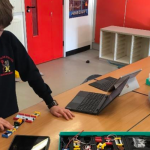In today’s fast-paced world, children’s attention spans seem to be decreasing due to the influence of rapidly changing technological environments. A short attention span can impact their academic performance and learning processes. However, understanding how to identify short attention spans in children and adopting appropriate strategies for improvement can lead to positive outcomes. In this blog, we will explore the symptoms of short attention span in children and effective ways to enhance their focus and attention.
Also read: How to Increase Your Child’s Attention Span
Symptoms of short attention span:
- Struggling in Classes: Children with short attention spans may find it challenging to stay attentive during lessons, experiencing difficulty in focusing on what teachers are saying and becoming easily distracted.
- Unfinished Tasks: Children with short attention spans may struggle to complete tasks they start. Signs like leaving tasks unfinished and disorganized living spaces may be noticeable.
- Quick Boredom: Children may lose interest in an activity or toy quickly and constantly seek new stimuli.
- Social Interaction Challenges: Children with short attention spans may find it hard to concentrate during social interactions, leading to difficulty in communicating with others.
- Academic Underperformance: Short attention spans can negatively impact academic performance, hindering children’s learning progress.

Strategies for improving attention span:
- Structured Routines: Establishing regular and structured daily routines can help children better focus their attention. Consistent morning routines, designated learning hours, and consistent sleep schedules can be beneficial.
- Single-Task Focus: Allowing children to focus on one task at a time can help improve their attention. Multitasking can lead to distractions and reduced focus.
- Short and Interactive Activities: Opting for short, engaging activities such as games, puzzles, and interactive books can help capture children’s attention more effectively.
- Managing Technology and Screen Time: Limiting prolonged screen time and guiding children toward high-quality content can positively impact their attention spans.
Also read: How to Manage Screen Time for Kids - Physical Activities: Encouraging regular physical activities can help children expend energy and improve their ability to concentrate.
Conclusion:
A short attention span can pose challenges in a child’s daily life and education. However, by recognizing the symptoms and employing effective strategies, we can enhance children’s ability to focus and maintain attention. Consistent routines, single-task focus, interactive activities, managed technology use, and physical activities are powerful tools to support children in improving their attention spans. Let us remember that every child is unique and should be supported based on their individual needs to foster a positive and attentive learning experience.
Click for beneficial contents for your children!
Rachel Turner 🖋️
Content Creator and Educator



